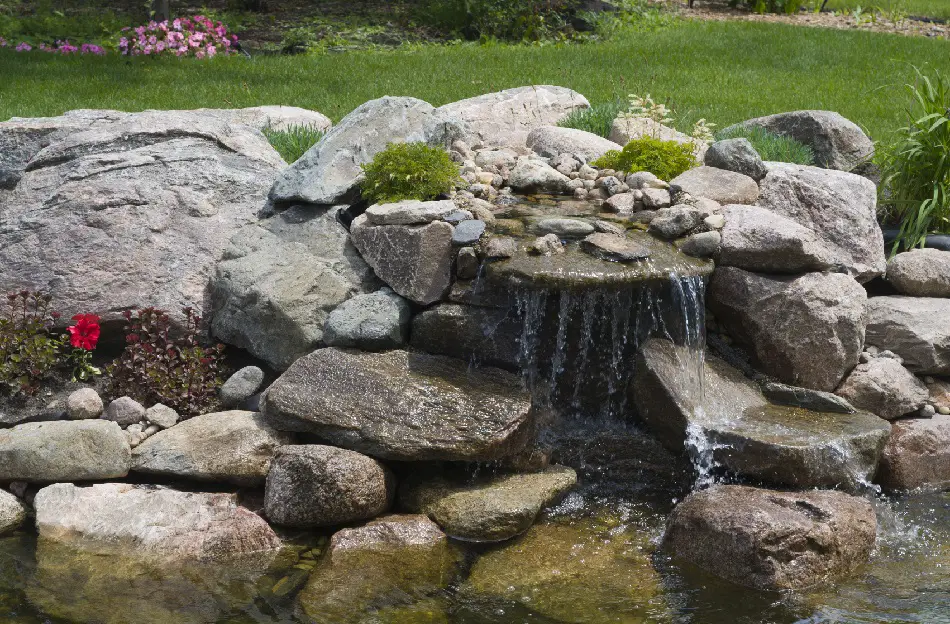Create Your Own Tranquil Oasis: How to Build Your Own Pond Waterfall
Are you looking to add a touch of serenity and natural beauty to your outdoor space? Building your own pond waterfall can be an incredibly rewarding and transformative project. Not only will it enhance the aesthetic appeal of your garden or backyard, but it will also create a soothing and relaxing ambiance that you can enjoy year-round. In this comprehensive guide, we will walk you through the step-by-step process of building your own pond waterfall, from planning and design to construction and maintenance. Let’s dive in and explore how you can bring the calming sounds of flowing water into your outdoor oasis.
1. Planning and Design
Before you start digging or purchasing materials, it’s essential to carefully plan and design your pond waterfall. Consider the size and layout of your outdoor space, the natural topography of the area, and the desired aesthetic of your waterfall. Sketch out a rough design on paper, taking into account the placement of rocks, plants, and any additional features you may want to incorporate. It’s also crucial to check with local authorities to ensure compliance with any regulations or permits that may be required for building a pond or waterfall on your property.
2. Selecting the Location
Choose a suitable location for your pond waterfall, taking into consideration factors such as sunlight exposure, proximity to utility lines, and the natural flow of water. Ideally, the site should be relatively level and free from overhanging trees or shrubs that could deposit debris into the pond. Additionally, consider the visibility of the waterfall from various vantage points to ensure that it becomes a focal point in your outdoor space.
3. Excavation and Pond Construction
Once you have determined the location, it’s time to start the excavation process. Use a garden hose or spray paint to outline the shape of the pond and waterfall. Begin digging the pond, ensuring that the depth and shape align with your design plans. You may need to rent excavation equipment or enlist the help of a professional if the task is too labor-intensive.
After excavating the pond, line the area with a durable pond liner to prevent water seepage. Ensure that the liner extends beyond the pond’s perimeter to allow for secure anchoring. Next, add a layer of protective underlayment to cushion the liner and prevent punctures from rocks or roots.
4. Installing the Water Pump and Filtration System
A reliable water pump and filtration system are essential components of a functioning pond waterfall. Select a high-quality submersible pump that is capable of circulating the water volume of your pond at least once per hour. Additionally, consider adding a biological and mechanical filtration system to maintain water clarity and minimize maintenance requirements.
5. Creating the Waterfall Structure
Constructing the waterfall structure is where your creativity and personal flair can shine. Use a combination of large and small rocks to create a natural-looking cascade, ensuring that the water flows smoothly and evenly over each rock. Experiment with different arrangements and angles to achieve the desired visual and auditory effect.
To enhance the natural appearance of the waterfall, consider incorporating aquatic plants such as water lilies or irises around the edges of the pond and waterfall. These plants not only add visual interest but also help to oxygenate the water and provide a habitat for beneficial aquatic life.
6. Final Touches and Landscaping
Once the waterfall structure is in place, add the finishing touches to complete the transformation of your outdoor space. Surround the pond with a variety of native plants, shrubs, and ground cover to seamlessly integrate the waterfall into the surrounding landscape. Consider adding decorative lighting to illuminate the waterfall at night, creating a captivating and enchanting ambiance.
7. Ongoing Maintenance
While a well-designed and constructed pond waterfall can be relatively low-maintenance, it’s essential to establish a routine maintenance schedule to ensure its longevity and optimal performance. Regularly inspect the pump, filtration system, and pond liner for any signs of wear or damage. Remove debris such as leaves and twigs from the water surface to prevent clogging and maintain water clarity.
In colder climates, it’s crucial to winterize the pond waterfall to protect it from freezing temperatures. Consider installing a pond de-icer to prevent ice formation and ensure that the pump continues to operate during the winter months. Additionally, keep an eye on the water level and top it off as needed to compensate for evaporation.
Conclusion
Building your own pond waterfall is a gratifying and transformative endeavor that can elevate the aesthetic appeal and tranquility of your outdoor space. By carefully planning and designing the waterfall, selecting a suitable location, and constructing the pond and waterfall structure, you can create a captivating focal point that enhances your connection to nature. With ongoing maintenance and care, your pond waterfall will continue to provide a soothing and serene ambiance for years to come, allowing you to immerse yourself in the peaceful sounds of flowing water right in your own backyard.


